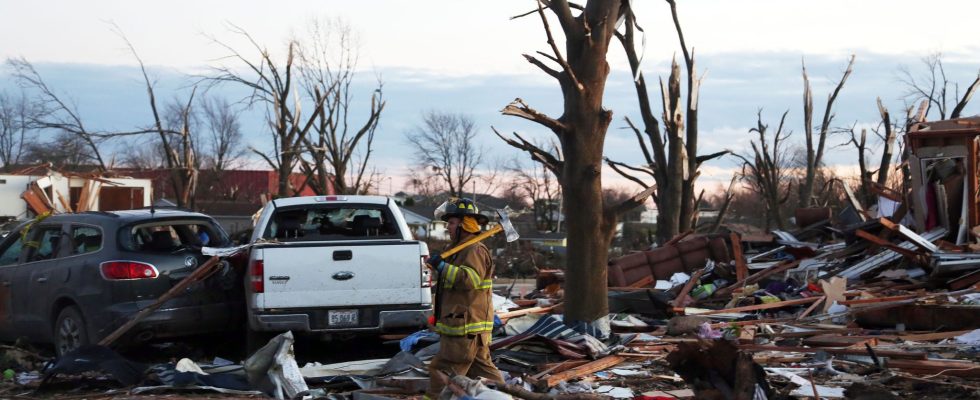With global warming, natural disasters are on the increase… And if the amount of damage worldwide decreased slightly in the first half, to 120 billion dollars (109 billion euros) according to an estimate by Swiss Re, the storms in the United States, however, have inflated the bill of insurers.
The costliest disaster was the earthquake in Turkey and Syria, the Swiss reinsurer said on Wednesday August 9 in a press release. According to a preliminary estimate by the World Bank, the economic losses caused by this earthquake are evaluated at 34 billion dollars, the costs for the insurance companies being estimated at 5.3 billion dollars, according to the calculations of Swiss Re.
But so-called secondary catastrophes, as opposed to major catastrophes like earthquakes or tropical cyclones, have once again driven insurers’ costs up. The amount of damage had been a little higher in the first half of 2022, at 123 billion dollars after the costly floods in Australia and South Africa.
A 50 billion bill for insurers
However, the costs for insurers have risen again, to 50 billion dollars during the first half of 2023, against 48 billion a year earlier, again highlighting the “growing impact” of these secondary disasters, underlines the group which acts as insurer for insurers.
“The effects of climate change can already be seen in certain perils such as heat waves, drought, floods and extreme rainfall,” said Jérôme Jean Haegeli, chief economist at Swiss Re, quoted in the press release.
Added to this are the risks associated with the expansion of urban areas, particularly in coastal areas or near rivers, which are more exposed to environmental risks. “It is high time to invest in more climate adaptation,” says the chief economist of Swiss Re, as the group regularly warns of the increase in the frequency and intensity of these secondary disasters.
Severe thunderstorms in the United States
In the classification of insurance companies, these secondary disasters include in particular hailstorms and floods. In the first half of the year, it was the storms in the United States in particular that pushed up their costs.
Insured losses for thunderstorms and related weather phenomena (such as hail, heavy rainfall, wind and sudden temperature changes) amounted to $35 billion, including $34 billion in the United States alone, which represents “nearly 70%” of the damage covered by insurers during the first half, quantifies Swiss Re.
Ten storms caused damage of more than 1 billion dollars, Texas being the most affected state, specifies the Swiss group.
Storms in New Zealand
Among the natural disasters during the semester, there are also two storms which followed one another in New Zealand, notably causing flooding in Auckland. Insured losses are estimated at $2.3 billion.
Italy’s torrential rains in the Emilia-Romagna region have also cost insurers $600m, with Swiss Re highlighting the need to boost risk coverage in Italy as economic losses are estimated at $10bn .
Since the beginning of July, a heat wave has been raging in the United States, in northwestern China and in southern Europe, resulting in fires in the Greek islands and in Italy but also in Algeria, notes Swiss. Re. But it’s still too early to provide estimates, he says.
